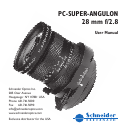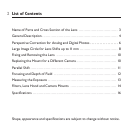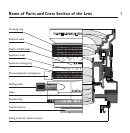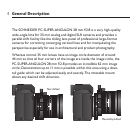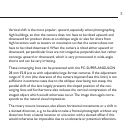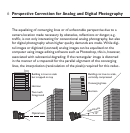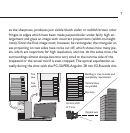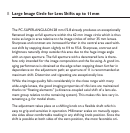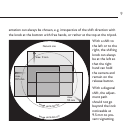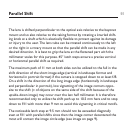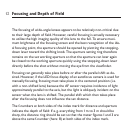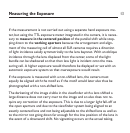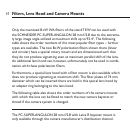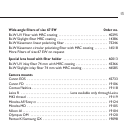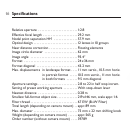
¡1ParallelShift
The lens is shifted perpendicular to the optical axis relative to the bayonet
mount and so also relative to the taking format by rotating a knurled shift-
ing knob at a shaft which is elastically exible to protect against its damage
or injury to the user The lens tube can be rotated continuously to the left
or the right in a rotary mount so that the parallel shift can be made in any
desired direction It is best to grip the lens at the attened part with the
millimeter scales for this purpose 45° latch steps ensure a precise vertical
or horizontal parallel shift as required
The maximum path of ¡1 mm at both sides can be utilized to the full in the
shift direction of the short image edge (vertical in landscape format and
horizontal in portrait format) if the camera is stopped down to at least f/8
On a shift in the direction of the long image edge (horizontally in landscape
and perpendicular in portrait), low vignetting of the image corners oppo-
site to the shift (= of objects on the same side of the shift because of the
upside-down image) may occur over the last half millimeter It is therefore
recommended only to utilize the shift path up to 105 mm here and to stop
down to f/¡1 with more than 9 mm to avoid this vignetting in critical motifs
The noticeable latch step at 95 mm should not be exceeded diagonally
even at f/¡1 with parallel shifts since then the image corner decentered the
most will contact the image circle edge (see image on page 9)



